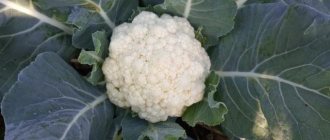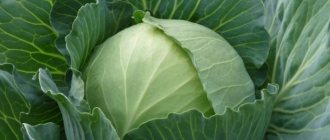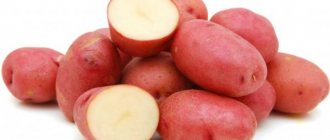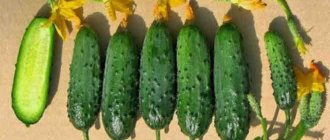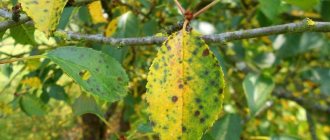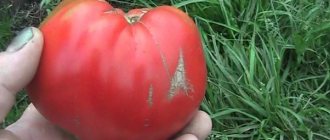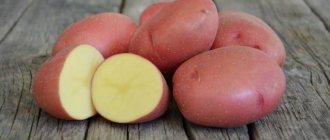Vegetable growing » Cabbage
0
1323
Article rating
Kira Stoletova
White cabbage Kilaton is a popular high-yielding variety that is easy to care for. The vegetable is planted in open ground from seedlings or seeds. Cabbage gets sick if it is not cared for properly, and to protect it, spraying with special solutions is used.
Cabbage variety Kilaton
Description of cabbage variety Kilaton
The hybrid was bred by Dutch breeders from Syngenta Seeds. The variety has been registered in the State Register since 2004. In the Russian Federation, Kilaton F1 cabbage seeds are distributed by manufacturers Prestige, Gardens of Russia, Partner, Gavrish. The variety is recommended for cultivation in the southern regions and the Central region. It demonstrates good resistance to low temperatures, as evidenced by the main characteristics of the Kilaton cabbage variety.
The ripening period is late. The time from the emergence of seedlings to full ripening is 130-140 days.
The head of cabbage is the main target of vegetable growers. Kilaton has a round-flat, dense structure. The color of the head of cabbage is green, the upper leaves are dark green, and persists throughout the entire storage period. The leaf rosette is spreading. There is a waxy coating on the surface of the leaves, quite intense and thick. When cut, the color of the head of cabbage is white or white-yellow.
To improve the taste and nutritional characteristics of Kilaton cabbage, you need to fulfill all the requirements of agricultural technology
The outer and inner stalks are very short. The Kilaton variety produces large heads of cabbage. The weight of one head is 3-4 kg.
Cabbage is renowned for its resistance to clubroot and internal spot necrosis. This allows you to store heads of cabbage for a long time in the basement. The variety tolerates low temperatures well.
Advantages of a hybrid
Thanks to the huge number of advantages, Atria cabbage is one of the most cultivated in the Russian Federation.
The hybrid is not particularly demanding in care and easily adapts to climatic conditions and soil type. Also, as noted earlier, this is a fairly strong variety that is not afraid of most known cabbage diseases.
One of the main advantages of Atria can be considered a gradual improvement in taste. While most cabbage varieties taste worse and worse with each month of storage, the taste of this hybrid only improves. This makes it a competitive product in the market in the late period.
The heads of cabbage have an attractive presentation. In addition, thanks to the even shape of cabbage, it is easy to transport over long distances without loss of quality.
Atria (F1) is a predictable variety. It always gives a stable harvest.
Pros and cons of Kilaton cabbage
Like any vegetable, a hybrid has its advantages and disadvantages. The list can be easily compiled based on reviews from farmers who grow it on their plots.
Among the advantages of the variety are:
- good taste;
- wide range of applications;
- excellent shelf life, allowing you to store the crop for a long time (7-8 months);
- immunity to cultural diseases;
- high yield.
Among the disadvantages of cabbage varieties are:
- decreased growth due to lack of lighting;
- demands on nutrition, soil composition and watering.
Attention! Despite the presence of disadvantages, vegetable growers prefer to grow the variety because of its good immunity and keeping quality.
Advantages and disadvantages
It has already been said that the hybrid is not prone to cracking. Farmers also noted that Krautman F1 cabbage has other positive qualities:
- With a short-term change in weather conditions for the worse, the crop yield remains high.
- The variety is not susceptible to putrefactive processes when left in the beds for a long time.
- The leaves have no noticeable veins, they are thin and succulent.
- The structure of cabbage allows it to be transported without the risk of damage.
- The heads can be stored for 4 – 5 months.
- Plants planted at the same time ripen at the same time.
Negative characteristics of cabbage:
- the gardener will not be able to grow fruits with good seeds;
- with poor soil irrigation, the vegetable does not reach its natural density and size;
- immunity to common diseases is lower than that of many modern hybrids.
Krautman F1 cabbage is grown using the seedling method. To obtain a high-quality harvest, a number of rules are followed:
- when sowing, the seeds are deepened by 0.5 cm;
- seedlings are grown for 1 – 1.5 months;
- cabbage is immersed in the ground to the level of the growth point of the 1st leaf;
- A few days after transplantation, young bushes are shaded;
- water the plant every 7 days;
- liquid volume for 1 m2 – 12 l;
- the number of hillings for the entire growing season is 2.
Advice. After watering and intense rains, the soil around the cabbage should be loosened. The immersion depth of the tool is no more than 5 cm.
Sowing seeds for seedlings | Planting seedlings in a greenhouse/greenhouse | Planting seedlings in exhaust gas | Harvesting |
| April | — | May June | September October |
| *dates are indicated for central Russia |
Cabbage productivity Kilaton F1
This is another characteristic that makes the Kilaton variety popular. From 1 sq. m of planting area, 10-11 heads with good weight are collected. If we take the average weight of one head of cabbage as 3 kg, then from 1 sq. m you can get up to 35 kg of late-ripening white cabbage.
Vegetable growers grow Kilaton due to the opportunity to get a good harvest from a small area
How to care
Planting and caring for the variety are similar to caring for cabbage varieties, only the timing of planting seeds for seedlings differs.
They begin sowing seeds in mid-March, 40-45 days before transplanting into the ground. For this purpose, shallow containers are used. First, the soil is well watered. The seeds are sown in rows; after germination they need to be thinned out. Next, we maintain the temperature no higher than 6-7 degrees, otherwise the seedlings will begin to stretch and grow weak. After a week of hardening, we increase the temperature to 15 degrees during the day and 12 at night.
When growing seedlings, you should avoid excess soil moisture and water after the surface has completely dried.
Use water above 18-20 degrees. Following these care rules will help avoid the appearance of blackleg.
It is also important to remember good lighting. April has short daylight hours, so supplement the seedlings with artificial lighting. Use special phyto-lamps or simple fluorescent lamps
Use special phyto-lamps or simple fluorescent lamps.
Next we water, loosen, feed. The Cossack hybrid is resistant to various pests and rots and does not suffer from blackleg. This makes it easier to care for.
Cabbage seedlings ready for transplanting into the ground
Cabbage loves warmth and humidity. In hot weather, watering is needed at least three times a week; do not let the soil dry out. Watering should be done in the evening when there is less evaporation. The water should be warm. Abundant watering for early cabbage is important in July - during the formation of heads of cabbage.
Mulch with peat, humus or just soil. Together with hilling, this helps retain moisture and nourishes the roots. Cabbage is fed with complete mineral fertilizer (consisting of phosphorus, nitrogen, potassium), with the addition of microelements. We apply the first doses of fertilizer three weeks after planting in the ground.
Do not forget to remove weeds from cabbage beds in a timely manner. They shade plantings, take away food, and serve as a breeding ground for pests and diseases.
In order for the root system of the plant to receive the proper amount of oxygen, it is necessary to regularly loosen the soil. This should be done after each moisturizing.
Another important procedure is earthing up the plant. Perform it once every 10-14 days. Thus, new roots are stimulated and the vegetable crop grows fully.
Thus, new roots are stimulated and the vegetable crop grows fully.
As soon as the seedlings have been sent into open ground, it is necessary to apply the first fertilizers after 2 weeks. Mullein infusion is perfect for this. To prepare it, you need to take 10 liters of water and 1 kg of fertilizer. As soon as another 2 weeks have passed, fertilize again with the same composition.
Caring for the Kazachok cabbage variety will necessarily involve fighting pests and diseases. The most popular among them remain:
- Aphids, cruciferous flea beetles. These insects can destroy an entire crop in a few days. But how to save cabbage from aphids, and what products should be used, is indicated here.
Aphids on cabbage
- Fungal diseases, including clubroot, powdery mildew, and blackleg.
To prevent the development of parasites and diseases, it is necessary to perform preventive treatment of plants every 10-12 days using the following insecticides and fungicides:
- Prestige,
Prestige from pests
- Commander Maxi,
- Lepidocide,
- Doctor Bedbug,
- Impact,
- Zoltan,
- Gamair.
Gamair
Among the folk remedies for combating cabbage and aphids, a decoction of excess dust is excellent. To do this, take 2 liters of water and add 400 g of tobacco dust. Then filter and add 50 g of crushed soap. At the end add 10 liters of water.
Iodine is an excellent nutrition and protection against diseases. To prepare an iodine solution, you need to take 40 drops of the product and 10 liters of water. Apply the solution once every 10 days, using 0.5 liters per bush.
Planting and caring for Kilaton cabbage
In regions with a cool climate, the variety is planted in seedlings. This allows you to get a harvest even under unfavorable conditions. In the south, two methods are used - direct sowing in the ground or growing seedlings. To grow healthy seedlings, you will need to complete several steps:
- Purchase and preparation of planting material. If the purchased seeds are covered with a colored shell, then they do not need pre-planting treatment. Seeds without a shell will have to be soaked for 1 hour in a solution of potassium permanganate (1%). Then rinse with clean water and place in the refrigerator for a day to harden.
- Preparation or purchase of soil mixture. You can use soil for seedlings, which is sold in a specialty store. If it is possible to prepare it yourself, then the mixture for Kilaton cabbage is prepared from soil, peat, and humus in equal parts. Be sure to add wood ash, then disinfect the mixture with the same solution of potassium permanganate that was used to soak the seeds. Another option is to heat the soil or pour boiling water on it.
- Timely sowing. The optimal time for seedlings is early April. If you decide to sow the Kilaton variety directly into the ground, then this should be done no earlier than May, when the soil warms up and stable heat is established.
- Preparing and filling containers. Containers must be 8 cm or more deep. Disinfect the container with a solution of potassium permanganate and fill it with soil mixture.
- Level the soil, make grooves no more than 2-3 cm deep, lay the seeds and cover with soil. Water immediately. Cover the containers with glass or film and leave in a warm place (+ 23 ° C).
- After germination, transfer to a room with a temperature of + 15-17 °C. Caring for seedlings involves timely watering. It is necessary to ensure that a crust does not appear on the surface of the earth, but the seedlings should not be flooded. After the formation of a green stem, it is necessary to feed the seedlings with a solution of mineral fertilizers.
Important! Do not use organic matter to feed Kilaton seedlings.
2 days before planting, fertilizing with a mixture of ammonium nitrate (3 g), potassium chloride (1 g), superphosphate (4 g) should be repeated.
When the seedlings have 5-6 leaves, transplant them into the ground according to a 50 x 50 cm pattern.
When planting seedlings, it is very important to maintain the planting pattern.
Bury the seedlings 1 leaf at a time. Further plant care consists of:
- Glaze. Cabbage needs to be irrigated with warm water. Cold water can cause bacterial or fungal infections to develop. When the head formation phase begins, abundant watering is required. 30-40 days before harvest, the frequency of watering is reduced by half. It is important to stop it 2 weeks before the due date so that the variety does not lose its storage ability.
- Feeding. The first time cabbage needs additional nutrition is 10 days after transplanting into open ground. The second feeding of the variety is carried out 3 weeks after the first. Both times nitrogen compounds are added. When heads begin to form, a phosphorus-potassium mixture is needed.
- Weeding, loosening and hilling. Weeding is done constantly. Weeds have a very negative effect on the growth and development of cabbage. It is best to loosen the soil after watering or rain. Hilling for Kilaton is not considered a mandatory procedure due to the short stem. But vegetable growers recommend carrying out the procedure once per season.
- Harvest. The optimal time is after the first frost. You need to monitor the air temperature at night. As soon as it drops to -2 °C, you should immediately remove the heads and store them in the cellar.
It is recommended to store Kilaton cabbage at a temperature of 0-2 °C. If this condition is met, then the heads do not deteriorate for 7-8 months.
Harvest and storage
Harvesting should be done in dry weather, using a sharp cutter to cut the heads of cabbage . For long-term hanging storage, it is necessary to leave a long stalk, otherwise it is cut to 3 cm. The collected vegetables must be sorted. For storage, leave intact heads of cabbage without cracks or signs of damage by frost and pests.
The storage room must be provided with monthly ventilation, a temperature of about 0°C and a humidity of 85–95%. The heads of cabbage are placed in boxes in one layer or laid out on shelves, wrapped in paper. It is also possible to store it in dry sand or hanging it from the ceiling by the stalk.
Important! The head of cabbage will be stored better if it remains covered with 2-3 upper leaves.
Kilaton cabbage is a promising sustainable hybrid for winter storage. Thanks to its immunity to diseases, its cultivation allows you to get a high yield.
